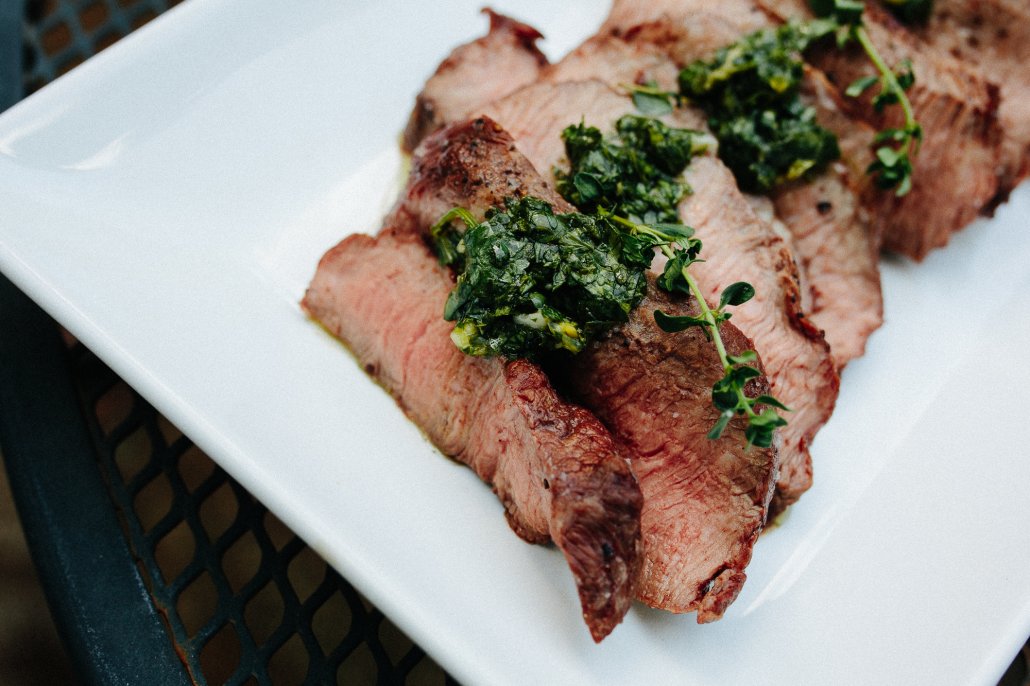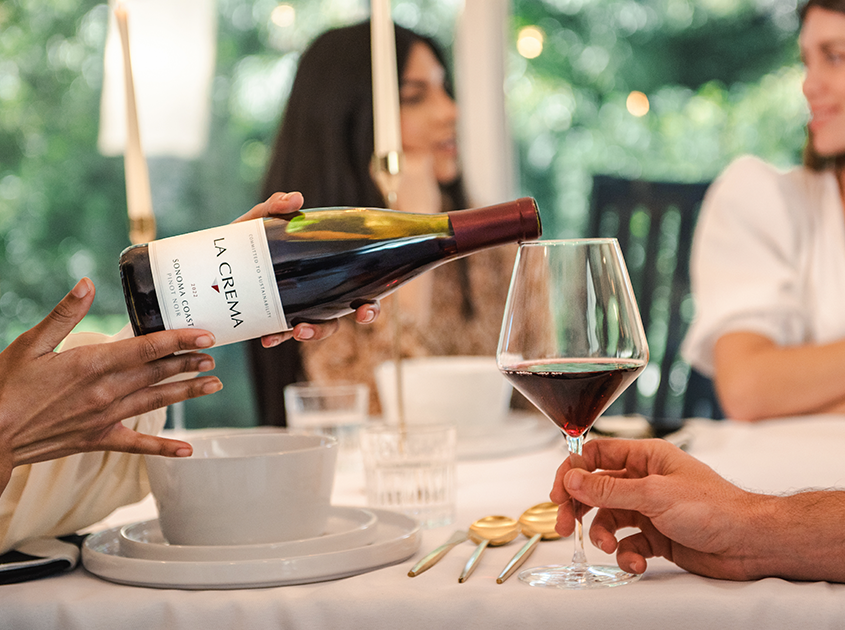The Ultimate Guide to Cabernet Sauvignon Wine
If red wine had a rock star, it would be Cabernet Sauvignon. Bold, complex, and utterly iconic, this full-bodied red has earned its nickname as the “king of grapes.” With its adaptability to different soils and climates, Cabernet Sauvignon has become one of the most widely planted red wine grapes in the world. High-quality Cabernet Sauvignon is born with the right balance of robust tannins, vibrant acidity, and deep fruit flavors that enables it to age for years—if not decades.
In this comprehensive Cabernet Sauvignon guide, you’ll learn everything you need to know about this noble variety—from its origin story and unmistakable taste to where it’s grown and how to enjoy it. By the end, you’ll know exactly what Cabernet Sauvignon is, how it differs from other red wine varieties, and how to find the perfect bottle for you. And, we’re betting you’ll be thirsting to pour yourself a glass. Ready to sip a little deeper into the world of Cabernet Sauvignon? Let’s go!
What is Cabernet Sauvignon?
Cabernet Sauvignon is a full-bodied red wine grape known for its firm tannins, deep color, and bold, complex flavors. It’s the classic “big red”—think blackcurrant, blackberry, tobacco, cedar, and often a whisper of green bell pepper. Structured and ageworthy, this wine is beloved for its power, finesse, and depth.
Today, Cabernet Sauvignon ranks among the most extensively cultivated red wine grape varieties globally. Why? Because it’s adaptable, reliable, and has stellar aging potential. Interestingly, Cabernet Sauvignon originated as a natural crossing between Cabernet Franc and Sauvignon Blanc in 17th-century France, combining the best characteristics of both parent grapes to create something truly extraordinary.
Why Should You Drink Cabernet Sauvignon?
Cabernet Sauvignon offers an experience for wine lovers who seek something powerful, yet nuanced. It’s the James Bond or Meryl Streep of red wines, commanding attention with confidence while leaving a lasting impression of sophistication. Collectors treasure Cabernet Sauvignon’s aging potential, while casual drinkers enjoy how approachable it is in its youth. It’s a versatile wine that pairs beautifully with hearty meals, while offering depth and complexity for special celebrations. Dependable yet dynamic, Cabernet is a true classic.
The History and Origins of Cabernet Sauvignon
Cabernet Sauvignon’s story begins in Bordeaux, France, where it sprung up in the 1600s as a natural crossing between Cabernet Franc and Sauvignon Blanc. This serendipitous combination created one of the most successful grape marriages in wine history. The variety quickly rose to prominence in Bordeaux blends, becoming a cornerstone of fine wine production in the region’s Left Bank. Estates like Lafite Rothschild, Latour, and Margaux built their reputations on ageworthy Cabernet Sauvignon-based blends.
From its French home, Cabernet Sauvignon gradually made its way to other world-class wine regions, including Napa Valley and Sonoma County, Chile’s Maipo Valley, Australia’s Coonawarra, and Italy’s Tuscany. Each region has contributed its own interpretation while maintaining the grape’s essential character. This expansion has played a crucial role in shaping the modern perception of premium red wine globally, establishing Cabernet Sauvignon as a benchmark for quality and aging potential.
Where is Cabernet Sauvignon Grown?
Cabernet Sauvignon is a globe-trotting grape that thrives in diverse climates and soils. Ideally, it prefers warm, sunny days, with well-drained soils and cool nights, which help balance its bold fruit flavors with fresh acidity and structure. But wherever it’s planted, the terroir—the unique mix of climate, soil, and topography—plays a major role in its final character.
Bordeaux, France
Cabernet Sauvignon’s birthplace continues to set the standard for elegance and complexity. Bordeaux’s Left Bank, particularly the Médoc and Graves regions, produces wines with mineral-driven complexity thanks to gravelly soils and a moderate maritime climate. These wines tend to show restraint, with notes of cassis, graphite, and tobacco developing slowly over decades of aging.
California, USA
California has become synonymous with world-class Cabernet Sauvignon, particularly in Napa Valley and Sonoma County. Napa Valley produces opulent, fruit-forward wines with rich textures and concentrated flavors. Sonoma County, meanwhile, offers a restrained style with bright acidity and mineral notes, thanks to its cooler coastal influences and diverse microclimates.
Chile
Maipo Valley and Colchagua Valley have put Chile on the map as a premier source for exceptional value Cabernet Sauvignon. The combination of warm days, cool nights, and mineral-rich soils creates wines with intense fruit flavors, herbaceous undertones, and silky tannins, all balanced by refreshing acidity.
Australia
In Coonawarra and Margaret River, Cabernet Sauvignon shows off its minty, eucalyptus-laced side. The unique terra rossa soils of Coonawarra contribute to wines with remarkable structure and aging potential. These wines are vibrant, earthy, and balanced, with a distinctive regional twist.
Italy
Super Tuscan wines have elevated Italian Cabernet Sauvignon to international acclaim. These wines often blend Cabernet Sauvignon with native Italian varieties, creating complex blends that reflect both international style and Italian terroir. They tend to be firmer, more restrained, and deeply savory—offering yet another delicious interpretation of the grape.
What Does Cabernet Sauvignon Taste and Smell Like?
Cabernet Sauvignon is known for its rich, complex aromas and dark-fruit flavors. In a classic glass, you’ll likely detect:
- Aromas & Flavors: Blackcurrant (also called cassis), blackberry, dark cherry, plum, green bell pepper, mint, violet, black pepper, clove, cedar, graphite, tobacco, dark chocolate, leather, and vanilla.
- Texture: Mouth-filling, structured with notable tannins.
The grape’s flavor profile is deeply influenced by where it’s grown. In cooler climates, you might notice more savory and herbal tones, brighter acidity, and firmer tannins. In warmer climates, the wine leans toward jammy fruit, lower acidity, and softer tannins.
Winemaking decisions—like fermentation temperature and the choice of the barrel’s wood and toast—also shape the wine’s personality. Fermentation temperature is a game-changer: It unlocks vibrant fruit flavors at cooler temps and bold, rich textures when things heat up. The choice of American oak barrels can bring bold vanilla notes, while their Hungarian counterparts tend to add subtle spice. Barrel toast levels can impart everything from fresh oak to caramel and smoky notes. These are all delicious dilemmas, but they’re still very important decisions!
Cabernet Sauvignon Food Pairing Ideas
Cabernet Sauvignon loves bold, rich dishes that can stand up to its intense flavor. The wine’s tannins balance rich proteins while its acidity cuts through fatty textures. For a memorable finale to a meal, pair it with a decadent dark chocolate dessert.
Here are a few go-to pairings:
- Cheese: Hard, aged cheeses like cheddar, gouda, and Manchego
- Pizza: Especially meat-heavy or mushroom-topped pies
- Burgers: Juicy beef burgers, lamb burgers, or even mushroom burgers
- Grilled Meats: Steak, short ribs, lamb chops, beef roasts
- Hearty Pastas: Bolognese, lasagna, or ragu
- Dark Chocolate: Dark chocolate truffles or flourless cake with espresso gelato
How to Serve and Store Cabernet Sauvignon
Unlock the full potential of your Cabernet Sauvignon with the right serving temperature, glassware, and storage. These tips are key to savoring every luxurious sip of your investment.
- Serving Temperature: Aim for around 60–65°F, slightly cooler than room temperature. Many Cabernet Sauvignons benefit from decanting 30 minutes to two hours before serving, which aerates the wine, softening its tannins and unleashing its full flavor potential.
- Glassware: Use a large, tall glass with a wide bowl. This gives the wine room to breathe and lets those intense aromatics concentrate, then lift from the glass.
- Storage Tips: Store bottles on their side in a cool, dark place with stable humidity and temperature, ideally around 55°F. If you’re aging a special bottle, consistency is key to preserving its integrity over time. You’ll want to avoid temperature fluctuations and vibrations, which can negatively impact the wine’s development.
Cabernet Sauvignon vs. Pinot Noir: How are they Different?
Cabernet Sauvignon and Pinot Noir are two beloved red wines—but they couldn’t be more different. Understanding these differences can help you choose the right wine for any occasion or preference.
- Body and Structure: Cabernet Sauvignon delivers full-bodied power with strong tannins and bold flavors, while Pinot Noir offers light-to-medium body with silky tannins and elegant subtlety.
- Flavor Profiles: Cabernet Sauvignon showcases dark fruit (blackcurrant, blackberry), cedar, and tobacco notes, whereas Pinot Noir features bright red fruits (cherry, raspberry), earthy mushroom, and floral characteristics.
- Food Pairing: Cabernet Sauvignon demands hearty foods like grilled steaks and aged cheeses, while Pinot Noir complements lighter fare such as salmon, chicken, and delicate cheeses.
- Aging Potential: Cabernet Sauvignon often improves significantly with extended aging, developing complex flavors in the bottle over decades. Pinot Noir can age beautifully but is often enjoyed for its immediate charm and elegance.
- Vineyard Sourcing: Cabernet Sauvignon thrives in warmer climates, whereas Pinot Noir shines in cool-climate regions.
For a deeper dive into these differences, read our comprehensive comparison of Pinot Noir vs. Cabernet Sauvignon.
How to Choose the Best Cabernet Sauvignon for You
When shopping for Cabernet Sauvignon, here are some expert tips to help you understand which Cab is best for you:
- Read the label: Look for clues like region, alcohol level, and vintage. Warmer regions and higher alcohol levels typically indicate richer, more powerful styles. Cooler climates often produce more restrained, food-friendly wines. Recent vintages tend to offer fresh fruit flavors while older vintages provide developed complexity.
- Ask a pro: Wine shop staff can offer great recommendations based on your tastes.
- Try La Crema’s Cabernet Sauvignon: Known for their expertise in producing elegant Pinot Noirs, La Crema has masterfully expanded into Cabernet Sauvignon, offering a varietal that shines with depth and character. Check it out for yourself here: Introducing La Crema Cabernet Sauvignon!
Find Your New Favorite Cabernet Sauvignon with La Crema
From its rich history to its irresistibly bold flavors, Cabernet Sauvignon continues to earn its place in wine lovers’ glasses around the world. It’s a wine that delivers strength and elegance in equal measure, whether you’re enjoying it with steak or savoring a quiet night in.
From identifying your unique palate preferences to learning how to read wine labels, we’ve covered everything you need to know to make an informed (and delicious!) choice. Now, it’s time to pour a glass and savor the magic of Cabernet Sauvignon for yourself.
La Crema, long admired for its elegant Pinot Noirs, now brings that same winemaking finesse to Cabernet Sauvignon. If you’re ready to dive in, La Crema’s Sonoma County Cabernet offers the perfect introduction (or new obsession).
SHOP LA CREMA CABERNET SAUVIGNON
FAQs
Is Cabernet Sauvignon always full-bodied?
Not always! While Cabernet Sauvignon is often known for its robust and full-bodied style, some bottles can be medium-bodied depending on the winemaker, region, and whether they are blended with other varietals.
What’s the difference between Cab and Merlot?
Cabernet Sauvignon is typically bolder, with strong tannins and dark fruit flavors, while Merlot tends to be plusher with a smoother, rounder finish. They complement each other and work beautifully as blending partners.
Why is Cabernet Sauvignon so popular?
It’s complex and powerful, yet elegant and pairs beautifully with food. And it develops even greater complexity with time. What’s not to love?
Does Cabernet Sauvignon have to be expensive to be good?
Not at all! There are excellent Cabs available at all price points. Seek out trusted producers like La Crema or lesser-known regions.
Can you chill Cabernet Sauvignon?
A slight chill (about 60–65°F) is perfect. Too cold, and you’ll lose flavor; too warm, and it may taste boozy.
Is Cabernet Sauvignon good for cooking?
Absolutely! It’s perfect for adding depth to hearty dishes like stews, reductions, braised meats, and sauces. Just make sure you cook with a high-quality Cabernet that you would drink.
How do I know if a Cab is meant to age?
Look for structured tannins, good acidity, and notes of oak or earth. Wines from regions like Bordeaux or Napa often age well. Your wine store professional should be able to point you to ageworthy Cabs in your price range.
What’s the deal with tannins in Cabernet?
Tannins give Cabernets their structure and complexity, contributing to the wine’s texture and aging ability. They can taste astringent when the wine is very young but soften and become luxurious over time.
Is Cabernet Sauvignon ever blended with other grapes?
Yes! It’s often blended with grapes like Merlot, Cabernet Franc, or Petit Verdot, especially in classic Bordeaux-style wines.
What’s a good beginner bottle of Cabernet?
Start with something smooth and fruit-forward—like La Crema’s Sonoma County Cabernet Sauvignon—for an approachable, delicious experience.









Comments